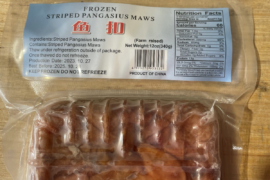Domestically produced seafood weighed heavily in the United States Department of Agriculture’s $159.4 million purchase commitments announced on May 13 to supply national food assistance programs. Frozen pollock orders will amount to approximately $20 million, while authorization for buys of Gulf of Mexico and South Atlantic wild caught shrimp reached $25 million.
Other fishery product purchase authorizations were made as follows: Pacific whiting fillets, $9 million; sockeye red salmon, $8.9 million; Pacific pink shrimp, $4 million; Pacific rockfish fillets, $4 million.
The purchases will be funded under the authority of Section 32 of the Agricultural Adjustment Act (Pub. L. 74-320), as amended (Section 32). This is one of many actions USDA is taking to address the disruptions in the food system supply chain and worsened food insecurity resulting from the coronavirus pandemic (SARS-CoV-2).
“The impacts of Covid-19 reverberated from our farms to our oceans. US fisheries and the American seafood industry were dealt a heavy blow,” said Agriculture Secretary Tom Vilsack. “USDA is pleased to make the largest single seafood purchase in the Department’s history. These healthy, nutritious food purchases will benefit food banks and non-profits helping those struggling with food hardship as the Biden Administration works to get the economy back on track for American families.”
John Connelly, president of the National Fisheries Institute, commented: “It’s good to see USDA recognize the importance of our essential workers as well as provide Americans with healthy seafood. We look forward to working with the Agricultural Marketing Service (AMS) on this as they begin the procurement process.
“The seafood community and the 1.7 million American jobs along its value chain, has been hit hard by the pandemic from the men and women who work the water to processors, distributors and retailers and restaurants that offer seafood. Most of the links in that vital chain are small businesses that have struggled to survive. Help, like this, will greatly benefit recovery and help get Americans back to work.”
In addition to seafood, selected products to e procured include apricots (frozen, canned and dried), prepared peaches, chickpeas, dry peas and pistachios. The inventories of these commodities are in high oversupply due to a decrease in demand because of the Covid-19 health crisis and disruption in the supply chain, as restaurants and other outlets closed during the pandemic.
Within a few days of approval, USDA’s Food and Nutrition Service will offer these commodities to their networks. Orders should be received during the first week of June with solicitations being issued mid-June and awards occurring near the end of the month. Deliveries should start to occur by mid-August.





